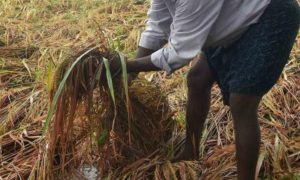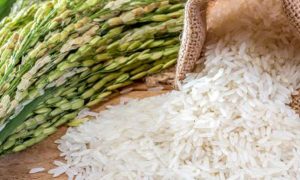Ease In Rice Export Restrictions Helping Domestic Prices Ahead Of Harvest

Rice prices are trending upward following India’s removal of export restrictions, enhancing competitiveness for exporters. While current prices for both basmati and non-basmati rice are lower compared to last year, experts anticipate an increase. The lifting of the Minimum Export Price (MEP) and reduced duties has opened new markets for Indian rice. With improved crop yields expected, demand may rise as fresh paddy arrives in the market.
Rice prices have shown signs of uptrend after India removed export restrictions and opened new business avenues for exporters. The removal of trade barriers has helped Indian rice exporters regain competitiveness in the overseas markets.
According to traders, rice prices, both basmati and non-basmati white rice, are lower on a year-on-basis, but they anticipate prices to pick up in the coming days.
Last year same time, basmati rice traded at Rs 3,500 per quintal, which is now at Rs 3,100-3,200, rising from about Rs 2,800-2,900 after the removal of trade barriers in late September.
India is the leading exporter and grower of basmati rice, followed by neighbouring Pakistan.
Rahul Chauhan, Director of IGrain India, a leading agri commodity research firm, said increase in prices may not be stable. “This year crop is good and production will be on higher side, so the increase in prices may not be stable,” he added.
Akshay Gupta, Head, Bulk Exports, KRBL Limited, which sells basmati rice under ‘India Gate’ brand, echoed a similar sentiment and asserted that global rice prices will surely be impacted and will see a fall as the world’s biggest exporter comes back in the market “quite strongly”.
“The Indian rice industry is rejoicing this decision as out of the 16 million tons of Non Basmati rice exported out of India, about 9 million tons was white rice and another 7 million tons was parboiled rice. The 9 million tons market is now open for Indian exporters a bigger segment of exports. Whereas, parboiled rice has also become competitive against global markets having just 10 per cent duty instead of 20 per cent earlier,” Gupta added.
Anshul Garg, Director and CEO of Haryana-based Aroma AAT Basmati Rice, feels that removal of Minimum Export Price (MEP) has been a time-appropriate move to supplement the basmati rice exports.
“Since the season for new rice is almost here, the MEP removal is helping exporters to trade Basmati rice at competitive rates against international competitors,” said Garg.
As per Agricultural and Processed Food Products Export Development Authority (APEDA), India exported 5.2 million tonne of basmati rice to the world for Rs 48,389.18 crores in 2023-24. Major export destinations last year were Saudi Arab, Iran, Iraq, UAE, the US, and Yemen.
Vikram Marwaha Joint Managing Director of DRRK Foods, believes that several countries that may have maintained lower buffer stocks last year (because of the elevated costs), may replenish their granaries this year, further raising demand for Indian rice.
“As fresh paddy starts arriving in markets, farmers in India will realise better prices for their produce. We expect paddy prices to rule above the MSP. The demand for non-basmati white rice is expected to be firm this season, after the contraction we witnessed last year,” said Vikram Marwaha, Joint Managing Director of DRRK Foods.
Several other market participants say that rice prices in other key growing nations, who compete for market share with India, have started dropping, with India entering the market with little or no barrier.
Last year, only government-to-government export of non-basmati white rice was allowed to ensure food security.
UAE, Nepal, Bangladesh, China, Cote D’ Ivoire, Togo, Senegal, Guinea, Vietnam, Djibouti, Madagascar, Cameroon, Somalia, Malaysia, Benin, and Liberia are some of the key buyers of Indian non-basmati rice.
India had banned the export of rice in July 2023 to control domestic inflation and secure food security of the country. This has now been eased by removing MEP on basmati rice, and allowing export of non-basmati white rice but subject to a minimum export price of USD 490 per tonne, and reducing export duty on parboiled rice to 10 per cent from 20 per cent. (ANI)
Source Link : https://businessworld.in/article/ease-in-rice-export-restrictions-helping-domestic-prices-ahead-of-harvest-535048
















